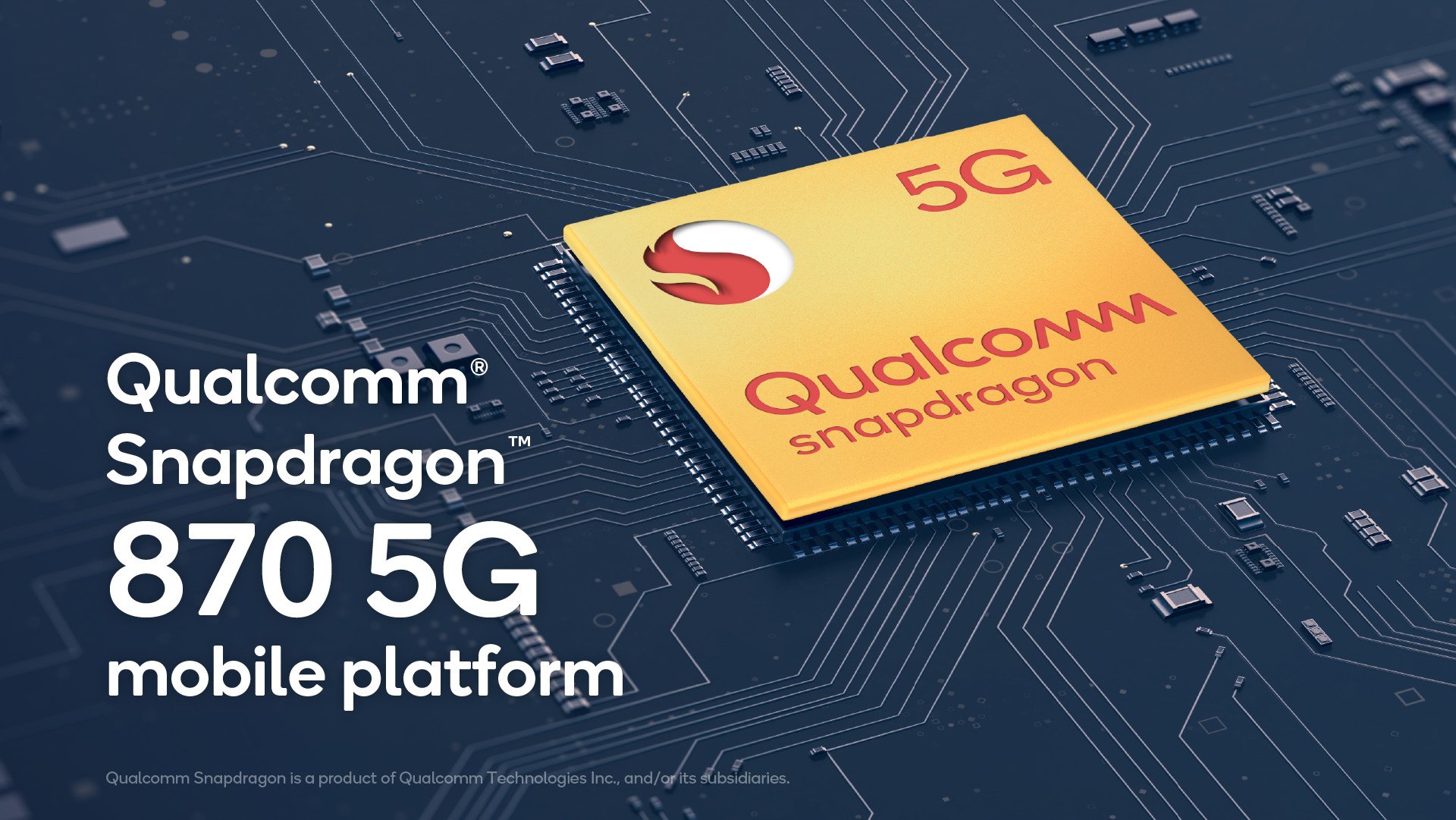Qualcomm Snapdragon 870 is here to usher a new era of affordable flagships

What you need to know
- Qualcomm is launching the Snapdragon 870 5G Mobile Platform, focusing on providing a nominal boost over last year's Snapdragon 865+.
- The new processor features a similar architecture as its predecessor, with a slightly higher clock speed of 3.2GHz for increased performance.
- This is the first time Qualcomm has had two flagship 800-series chips at the start of a new year.
Today Qualcomm is announcing its latest chipset, the Snapdragon 870 5G Mobile Platform, in a surprising move that continues its nominal updates over the Snapdragon 865 that powered many of last year's best Android phones. Key to this latest chipset is its speed improvements over the Snapdragon 865+, which was already 10% faster than the original 865 on both CPU and GPU fronts. The Snapdragon 870 uses the same architecture as its predecessor but has an increased CPU clock speed of 3.2GHz, which should offer a boost in computing power.
That means we have a single Cortex A77 core that goes up to 3.2GHz, three A77 cores that go up to 2.40GHz, and four energy-efficient A55 cores at 1.80GHz. The Adreno 650 GPU is unchanged from the Snapdragon 865+, meaning you will see a 10% uptick in gaming performance from the normal Snapdragon 865.
The rest of the hardware is unchanged as well: you'll find a Hexagon 698 processor for AI tasks, dual 14-bit Spectra 480 ISP, and an X55 5G modem that delivers up to 7.5Gbps downlink. The only difference in terms of connectivity is that the 870 uses Qualcomm's FastConnect 6800 system with Wi-Fi 6 and Bluetooth 5.2 connectivity, missing out on Wi-Fi 6E.
The Snapdragon 870 delivers the best features from the 865+ at a more affordable cost.
The platform is built on a 7nm node, can handle QHD panels up to 144Hz, and works with LPDDR5 RAM modules. The chipset is being positioned as a second flagship offering under the recently announced Qualcomm Snapdragon 888, which powers the new Samsung Galaxy S21 smartphones. As a more direct follow-up to last year's flagship chipset, the 870 is in a unique position to offer flagship-level performance at a lower cost than the Snapdragon 888.
Last year, the Snapdragon 765 was in a similar position, powering many higher-tier smartphones like the Google Pixel 5. This was due to not only the cost of the Snapdragon 865 and 865+ but also the increased price sensitivity brought on by the ongoing global pandemic, forcing many to forgo more expensive smartphone offerings. The Snapdragon 765 hit a sweet spot between performance and cost, and since this is the first time Qualcomm has kicked off the year with two flagship chipsets, the Snapdragon 870 could similarly fill a void between premium mid-range and premium flagship smartphones.
Qualcomm's vice president of product management, Kedar Kondap, has stated that many partners have already pledged to use the new Snapdragon 870 in their upcoming flagships:
Building upon the success of Snapdragon 865 and 865 Plus, the new Snapdragon 870 was designed to address OEM and mobile industry requirements. Snapdragon 870 will power a selection of flagship devices from key customers including Motorola, iQOO, OnePlus, OPPO, and Xiaomi.
It will be interesting to see how OEMs position upcoming flagship devices with the new chipset. Motorola recently teased its plans to start using Qualcomm 800-series chips in its G-lineup, which had many speculating whether that would be the 888 or an older chip like the 865. Similarly, OnePlus is also said to be working on a OnePlus 9E that will sit under the standard OnePlus 9 in terms of performance, and this could very well be the chip that powers it, given the company's commitment to using Qualcomm's latest chips.
Get the latest news from Android Central, your trusted companion in the world of Android
The Snapdragon 870 could line up perfectly as a potentially more affordable option to this year's premium flagship smartphones, which also means we could see a broader mix of phones releasing in the coming months.

Derrek is the managing editor of Android Central, helping to guide the site's editorial content and direction to reach and resonate with readers, old and new, who are just as passionate about tech as we are. He's been obsessed with mobile technology since he was 12, when he discovered the Nokia N90, and his love of flip phones and new form factors continues to this day. As a fitness enthusiast, he has always been curious about the intersection of tech and fitness. When he's not working, he's probably working out.

